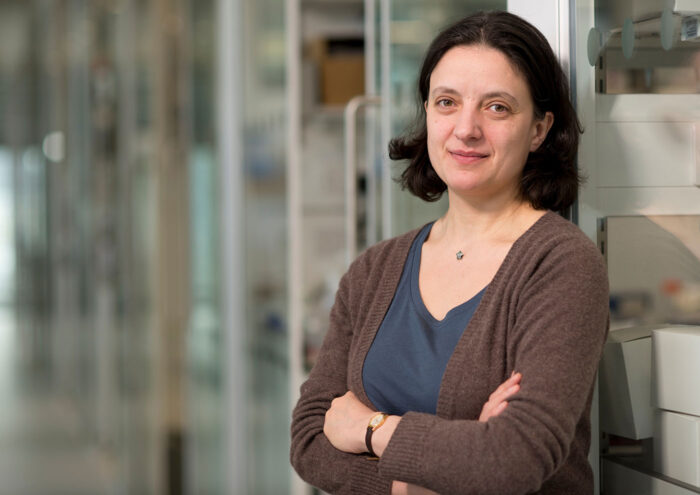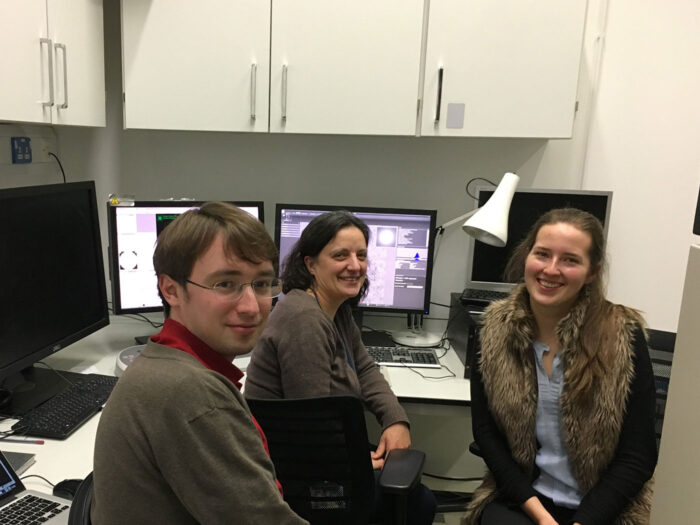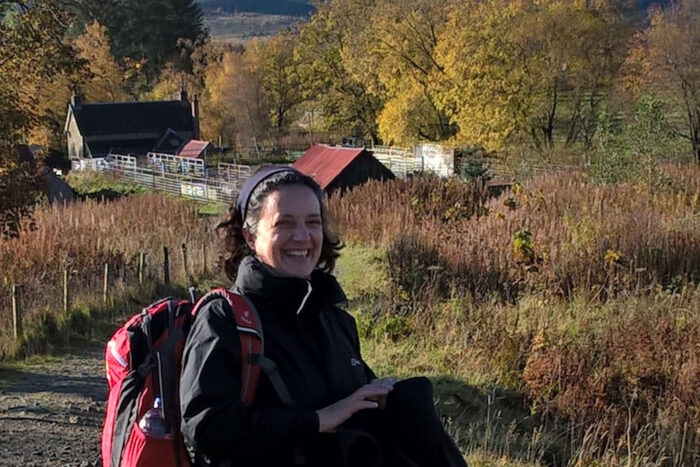Paula da Fonseca: Deciphering the secrets of the proteasome

Paula da Fonseca first ran across the proteasome, the cell’s protein recycling centre, during her pre-doctoral fellowship in Portugal, but it wasn’t until she saw it by electron microscopy as a postdoc at Imperial College that she truly fell in love with it, as she had with electron microscopy during her PhD. “Actually seeing a protein complex for the first time was a very special moment”, she says. “I knew from the outset it was what I wanted to do.”
The proteasome is a big multi-subunit complex that’s absolutely required for the smooth running of a cell. Without it, proteins aren’t degraded properly, and the resulting garbage build-up is incredibly damaging; indeed, proteasome inhibitors are potent chemotherapy agents. At the heart of the proteasome lies the catalytic subunit, a barrel-shaped structure that acts like a tiny wood-chipper, shredding proteins fed into it by the regulatory subunits, which cap the barrel at both ends, and carry highly sophisticated mechanisms for detecting and trapping elderly or defective proteins, or proteins that need to be removed for the cell to progress to the next phase of division.
The architecture of the regulatory cap was mostly unknown when Paula started her postdoc at Imperial, and it took until 2012, and a move to the Institute of Cancer Research, before she, Jun He and Ed Morris were able to publish a molecular model of the whole human proteasome, derived from electron cryo-microscopy (cryo-EM) images, a tour de force that finally allowed a mechanistic understanding of the complex. “It was a massive day when I had a model of the subunits in front of me, and it actually made sense!”, says Paula.

Paula’s ten-year quest for the proteasome, while working on other projects, made for a very long postdoc. “I was quite hooked on my work, and thinking about enjoying it, rather than a career”, she says. “I didn’t have a career strategy – science and a career strategy don’t necessarily go together!” However, Paula started to apply for group leader positions once she realised that she’d reached the point where she wanted to share what she had learnt, and independently explore all the ideas she had. It didn’t seem like a big step in the end: “I never thought too much about applying to run a lab”, she laughs, “I just went ahead and did it.”
Since arriving at the LMB in 2013, Paula has gone on to determine the high-resolution structure of the human proteasome core complex and to show the importance of cryo-EM for the development of new medicines, still in collaboration with Ed Morris, who happily, is now her collaborator in life as well as in the lab. “We try to keep work a little bit away from our time together – you have to have a life outside work “, she says. But that time away is also really important for problem solving, Paula adds. “If you take a break you often come back and you see things differently, so you can progress; it’s important to disconnect.”

More recently, Paula’s work has led to a collaboration on malaria research, where her lab’s cryo-EM insights are helping to drive the development of new compounds able to selectively block the Plasmodium falciparum proteasome, whilst leaving the human version unscathed. In the light of the increase in drug-resistant malarial strains, such new weapons are vital for the fight against the disease. Paula is also continuing her work on the human proteasome and learning about its detailed role and regulation.
“You need to like a challenge to do what I do”, Paula says. “Progress can be slow, and there are long hours, as perfecting biochemistry and protein purification takes a lot of time. On top of that, optimising the conditions for the cryo-EM and data analysis is still demanding. But when I look back on how things were when I started, our knowledge of the proteasome is far further on than I could have anticipated. And I’m very proud of that.”
Paula was interviewed for this article by Kathy Weston, February 2019.
Paula has now moved to the Institute of Molecular Cell & Systems Biology, University of Glasgow.
Further references: